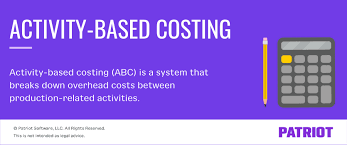When it comes to payroll, you have a lot of things to check off your to-do list. There can be a lot of steps involved in paying your employees, from gathering timesheets to distributing pay stubs. However, once you have paid your employees, your payroll checklist is not yet complete. You must also file payroll reports whether certified, quarterly or annual reports. Continue reading to learn what a payroll report is and which forms you must file.
What is a Payroll Report?
The IRS and the majority of states require businesses to submit quarterly and annual payroll report that is solely for tax purposes. When you apply for a business loan, the lender will almost certainly request a payroll report detailing employee compensation. Employees, as well as the Fair Labor Standards Act (FLSA), expect you to provide individual payroll reports, known as pay stubs, with each paycheck.
Payroll reports are documents that contain a summary of payroll data, payroll reports of various types assist business owners, lenders, and governments in analyzing payroll costs.
Payroll software solutions provide a variety of payroll reports including the annual report that can be generated on the fly. Let’s take a look at some of the most common payroll reports you’ll encounter as a small business owner. Payroll report can be done weekly, biweekly, monthly, quarterly, or yearly. The choice depends solely on the size of your business.
Types of Payroll Report
How many different types of payroll reports are there? To paraphrase Lindsay Lohan’s character in Mean Girls, “the boundary does not exist.”
The following is a basic classification of the most common payroll report kinds.
#1. Payroll reports for the entire company
A payroll register provides an overview of an employer’s payroll expenses. It deconstructs compensation, deductions, and taxes into their most basic components. It’s the report to consult if you want to know how many hours all of your employees worked in the last pay period or how much your company paid in Federal Insurance Contributions Act (FICA) taxes in the previous quarter.
Because payroll registers include so much information, it’s doubtful you’d want to share it all with a third party, such as a lender. Before distributing personal information about your employees outside your four walls, redact it.
Company-wide payroll reports are not referred to in the same way by all payroll solutions. Payroll journal is a colloquial term for payroll register.
#2. Reports tailored to individual employees
Pay stubs, often known as employee earnings records, include individual employees’ salaries, taxes, and deductions. Pay stubs, as opposed to a payroll register, reveal each employee’s wages one by one, giving you a more granular perspective of your company’s payroll activities.
Employees must have access to their pay stubs under the FLSA. They assist employees in understanding how their paychecks are computed, and they are frequently used to demonstrate income when applying for leases and loans.
#3. Timesheets for employees
Employee time reports are used by small business owners to determine how many hours their staff worked in a given period. Depending on the report you create, it may include information about what the person did while on the clock.
When assessing employee productivity payroll analytics, manufacturing business owners should consult their employee time reports. When you compare your employees’ working hours to the number of finished goods produced during the same time period, you can see how productive they were.
#4. Reports on cash requirements
A cash requirements report informs business owners of the amount of cash required to complete payroll. It outlines how the funds are allocated between direct deposit, taxes, and other deductions. Checking this report should be part of your payroll management practices.
#5. Payroll tax returns
Payroll tax reports are annual and quarterly payroll reports that business owners submit to federal, state, and local governments to convey payroll liabilities and employee remuneration.
The following are the most common federal payroll tax reports:
- Form 940: An annual payroll report for the Federal Unemployment Tax Act (FUTA) tax.
- Form 941 is a quarterly payroll report for FICA and federal income tax withholding.
- The Form W-2: An annual payroll report for employee pay and tax withholding.
There is almost certainly a state equivalent to every federal payroll tax report. Check with your state tax office to ensure that you have not missed a state quarterly payroll report.
#6. Payroll Reports on the Paycheck Protection Program (PPP)
To qualify for forgiven PPP loans, small enterprises must meet certain criteria. Payroll software systems can provide PPP reports that include all of the information required to apply for the PPP loan and forgiveness.
PPP reports assist business owners in calculating loan amounts by analyzing salary data from 2019 or 2020. When the time comes to request debt forgiveness, payroll software will generate another report detailing how much you spent on payroll over the loan’s covered term of 8 or 24 weeks.
#7. Certified Payroll Reports
Contractors and subcontractors working on government construction projects are required to produce certified payroll reports weekly. The majority of governments have developed blank forms that you can fill out and sign. WH-347 is the federal certified payroll reports form.
When completing federally certified payroll reports, carefully follow the Department of Labor’s requirements. Because payroll reporting compliance is critical here, seek the assistance of an accountant the first time you’re asked to produce a certified payroll report.
What to include in a Payroll Report
These three pieces of information will help you improve your payroll reports.

#1. Data comparisons
When there is something to compare data to, it becomes more meaningful. Consider comparing your data to data from the same time last year or the preceding period.
If you’ve ever looked at a public company’s audited financial accounts, you’ll see at least two years of data stacked on top of each other. The comparison helps potential investors determine whether the company’s financial position is improving, deteriorating, or remaining stable.
Comparable data is also useful for examining payroll expenses. When there is a baseline to compare with the new information, for example, you are more likely to identify payroll problems.
#2. Data for the entire year
Budget-conscious business owners — and all business owners should be — should include annual statistics and reports in their payroll forms.
Many firms, for example, generate quarterly company-wide payroll reports to track payroll spending. I’ll need to know how much I’ve spent on the payroll since January if I’m preparing a third-quarter payroll report. That way, I’ll be able to see if I’ll make it to December without blowing my business budget.
#3. Covered pay periods
Make the pay periods you’re reporting explicit at the start of every payroll form. Instead of “Quarterly Payroll Report,” rename your payroll register report “Q1 2021 Payroll Report.”
How to Produce a Payroll Report
Payroll reports come in numerous shapes and sizes. Here’s how to structure your salary report, whichever it may seem.
#1. Determine the information that is required.
Begin by identifying the data that needs to be shared with a third party or analyzed internally. When reporting to third parties, you don’t always want to include more information than they’ve asked for.
Assume you’re looking for a business loan and must provide a payroll report detailing your payroll costs for the preceding four quarters. You wouldn’t want to submit a full payroll register because it would include employee names, contributions to retirement plans, and a slew of other extraneous information. You’d be better off with a brief report that details employee earnings, employer taxes, and employer-provided fringe benefits.
#2. Select a time frame
Unless you’re using IRS forms to create a payroll tax report, you get to determine the reporting period.
For example, it may be preferable to generate 12 monthly payroll reports for your lender rather than four quarterly reports. It provides you with a more lead way in explaining swings in payroll costs.
#3. Enter payroll information
Now that it’s time to produce the payroll report, let me introduce you to Microsoft Excel, every accountant’s best friend. Examine the Excel templates available on the internet for something that vaguely resembles what you’re attempting to create, and then adapt it to match your needs.
After you’ve created your template, enter the data from your payroll system. If you are manually entering data, be careful not to commit a transposition error.
#4. Examine the outcomes
Once you’ve finished writing the report, go over it again for errors and to see what insights you can derive. Were your payroll costs greater or lower than anticipated? Why?
If you’re writing a report for a third party, consider what story the report is presenting. If a lender or investor asks you a probing question about your company’s financial paperwork, you want to be an expert.
How do I file my payroll report with the government?
Methods for submitting payroll data to the government vary by jurisdiction and report type. It’s possible that you’ll have to fill out paperwork related to federal and state taxes, as well as unemployment and workers’ comp. These forms may be submitted online, either directly to the government or through a tax reporting service. If you want to file your payroll report on time and accurately, you should talk to an accountant or payroll specialist.
How can I make sure my payroll report is accurate?
To ensure that your payroll report is accurate, it’s important to keep accurate records of employee hours worked, overtime, sick leave, and other types of leave. You should also regularly review your payroll reports and compare them to your payroll records to identify any discrepancies. In addition, you may want to consider using payroll software to automate your payroll process and reduce the risk of errors.
What is a payroll summary report?
The purpose of a payroll summary report is to give an overview of the total payroll costs for a given time period. You can expect to see details like the total number of staff, the total amount of payroll taxes, the total amount of benefits paid, and the total amount of wages and salaries paid. It is common practice for businesses to use the payroll summary report in order to keep tabs on payroll costs, make adjustments as needed, and compile financial statements.
What is the difference between a payroll report and a W-2 form?
Wages, salaries, benefits, and taxes are just some of the components that make up what are known collectively as payroll costs, and all of them can be found in a report called a payroll stub. However, at the end of the year, employees will receive a W-2 form from their employers. An employee’s W-2 form details not only the amount of federal, state, and local taxes withheld, but also the amount of Social Security and Medicare payments.
What is a payroll reconciliation report?
The payroll account in the company’s general ledger can be reconciled with the payroll records via a payroll reconciliation report. If there are any discrepancies between the payroll records and the general ledger, this report can be used to find them and fix them. If you want to make sure your payroll records and financial statements are correct, you need to use the payroll reconciliation report.
Summary
Payroll reports assist business owners in better understanding the employee pay costs of their firms. There is a lot to be learned from breaking down payroll expenditures in various ways, so don’t neglect the analytical process when preparing payroll reports.
Payroll Report FAQs
What should be included in a payroll report?
A good payroll is a document that employers use to verify their tax liabilities or cross-check financial data. It may include such information as pay rates, hours worked, overtime accrued, taxes withheld from wages, employer tax contributions, vacation balances, and more.
How do I make a payroll report?
Create a payroll summary report
- Go to the Reports menu.
- Find the Payroll section, then Payroll Summary.
- Set a date range from the drop-down.
- Select a single employee or group of employees.
- Lastly, select Run Report.
What payroll reports are due annually?
Annual payroll reports. Tax forms used to report unemployment taxes, W-2 income, and payments to independent contractors are submitted annually. These are due in the first quarter of the following year






